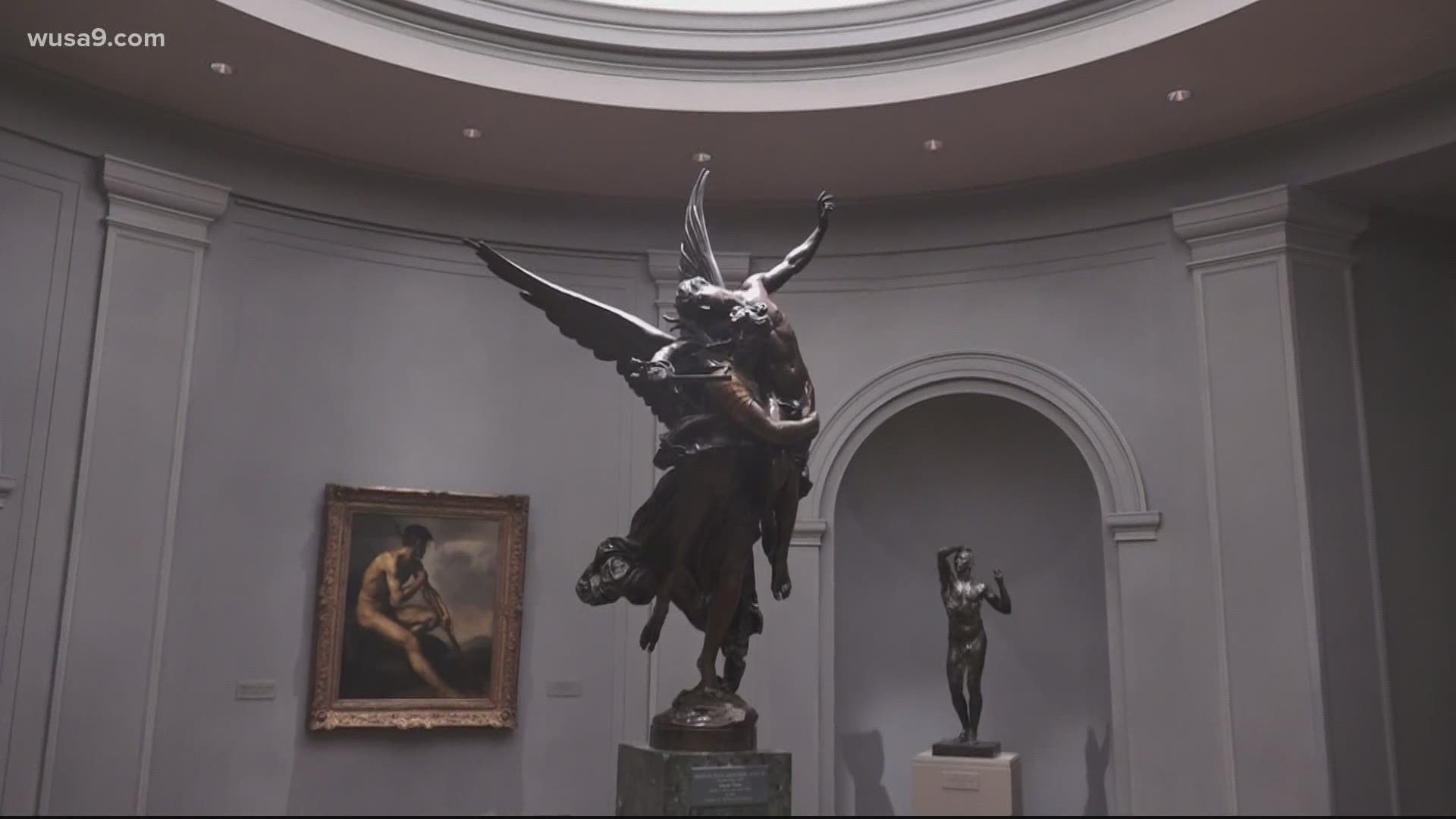WASHINGTON — Social distance markers are now affixed to the marble floors, only a few dozen visitors are allowed to walk throughout the galleries at a time, and a newly masked Van Gogh on the museum’s reopening website reminds visitors of the one accessory they can’t leave home without.
Such is the new normal for the National Gallery of Art, the first museum on the National Mall to reopen since the coronavirus pandemic began.
Planning for this moment started in March, when the gallery’s emergency response teams assessed what would need to change, and what elements among the museum’s timeless masterpieces could remain the same.
“As challenging as it was to close the National Gallery of Art very quickly, I knew that it would be much, more difficult to reopen the National Gallery,” director Kaywin Feldman said. “But I feel really confident about the safety and security of our staff and visitors and volunteers with our reopening.”
Security will politely enforce 6-ft. distance requirements, and new signs throughout the museum serve as subtle signals that minding one’s spacing within the expanses of the building is constantly expected.
Monday, July 20, the ground floor of the West Building will reopen. The building’s second floor and then the East Building will open to visitors as the District advances in reopening phases.
Perhaps the biggest change for visitors is the museum’s introduction of free timed-entry passes, which become available each Monday for the week ahead. A small number of walk-in passes will be offered on a first-come, first-served basis.
To control the limited flow of people, there’s now only one way in, and one way out of the West Building. Visitors must enter on 6th Street and Constitution Avenue, walking through the collections and exhibitions towards the museum’s exit on 7th Street.
Feldman described the approach as dipping a toe into reopening, a process that was helped along by visitors who adhered to new mask and distance restrictions in the gallery’s newly reopened sculpture garden.
“I'm happy to say that one of the things that we learned is how delighted people were to come back,” Feldman said. “We've also found that people have been very understanding about the requirement to wear masks and very willing to wear masks. So, we’re glad to be welcoming people back so that they can see the nation's collection.”


